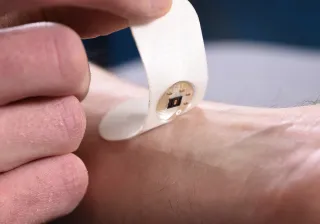Until the discovery of penicillin by Alexander Fleming in 1928 millions of people died for diseases caused by microbial infections which can today be cured by antibiotics. However, during the recent decades an increase of antimicrobial resistance has been become a real problem in humans and animals. Overuse and misuse of antibiotics are major causes for antimicrobial resistance.
Antibiotic resistant bacteria are spreading in various surroundings and ways. Did you know that almost every fifth person in Europe is a carrier of MRSA – a multi-resistant Staphylococcus aureus – without necessary knowing it? This may lead to serious situations in connection with surgeries.
As antibiotic resistance is a global concern holistic approaches are needed. The current WHO Antibiotic Awareness Week in November is a good example of means how to communicate about the importance of this matter to wide audience. Furthermore, recommendations of the European Food Safety Authority EFSA for reducing the use of antibiotics in food chain are applicable to other areas of life: Reduce, replace and rethink!
In Finland, the use of antibiotics has been reduced yearly by 5% during this decade, which is a positive sign. However, the situation elsewhere in Europe has remained the same. At the same time the antibiotic resistance problem is expanding and the use of more broad-spectrum antibiotics is increasing.
Nordic berries from nature’s treasure box
In many cases prevention of disease can be considered equally important as cure. If we can prevent spreading the pathogens we can reduce infections and use of antibiotics.
At VTT we have been active in research aiming at reducing use of antibiotics. In our studies, we were able to show that several Nordic berry extracts have antimicrobial activity against pathogens and antibiotic resistant bacteria. Combination of alternative treatments with other hurdles can prevent growth and spread of these bacteria. Thereby we can also reduce use of antibiotics.
VTT's innovations and long-term research and know-how of antimicrobially active berry compounds have led to new technologies to produce extracts which efficiently inhibit antibiotic resistant bacteria, including MRSA.
We are using side streams of the berry processing industry, especially berry seeds, to produce these active extracts. We have developed dry fractionation, milling and extraction technologies to concentrate active compounds from the berry raw-material. The berries are not always available as some of them are getting rare or cannot be cultivated. Therefore, we use berry cell cultures as raw-material for antimicrobial extracts.
During the past 10 years VTT has developed unique collection of berry cell cultures of all important Nordic berry species. These cell cultures are very interesting, as they produce also totally new antimicrobially active compounds not found in the berry fruit. VTT has several patents related to these technologies.
We focus on topical applications of the active extracts, such as wound healing and skin infections. Skin pretreatment before surgeries is one possible application of the future. These antimicrobial extracts would be very potent new types of therapies to infectious skin diseases caused by antibiotic resistant bacteria. These innovations would be one potential way to significantly reduce the use of antibiotics.
Every action counts
It’s not yet too late. If we act now we can still reduce the spread of antibiotic resistance. Responsible use of antibiotics is everybody’s task. We need to be responsible with the use of antibiotics in our daily life, including our family and pets. In addition, Finnish nature clearly offers alternatives for management of growth of pathogenic bacteria.







